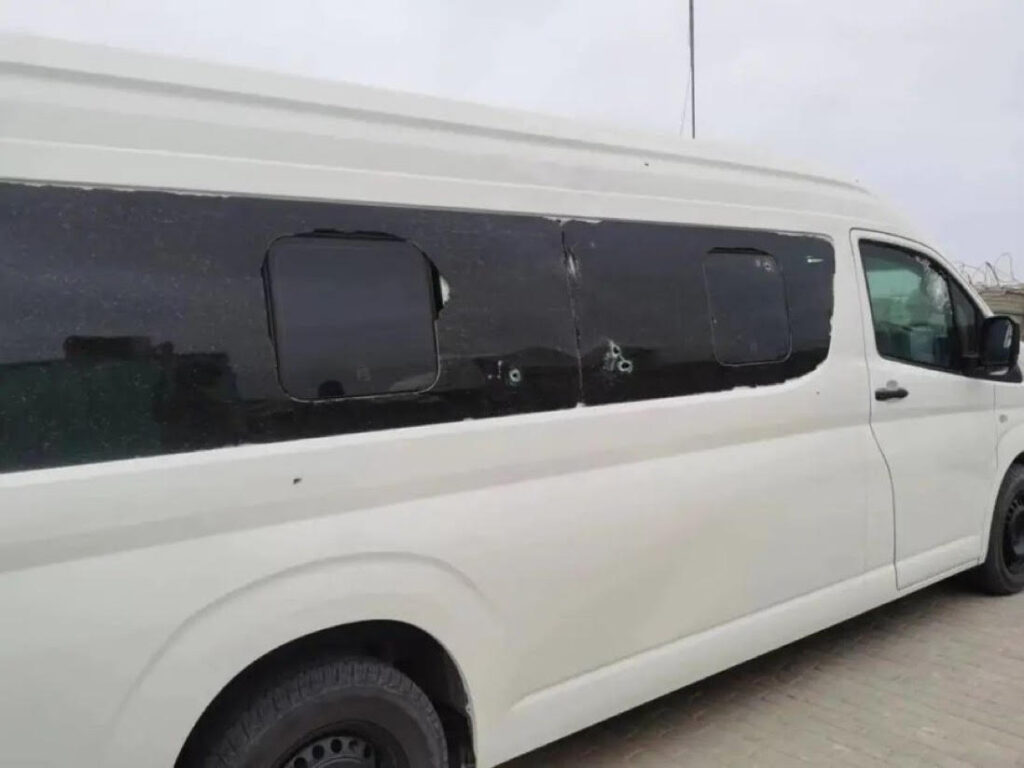
A day before the Independence Day (On 13 Aug 23), the insurgents belonging to Balochistan Liberation Army (BLA) Aslam Achoo group, Majeed Brigade, attacked a convoy of twenty-three (23) Chinese engineers which was moving from Gwadar Airport to Gwadar Port at Judicial Complex Compound, near Faqeer Colony, Gwadar.
The attack took place at around 9:30 am and an intense gunfight continued for two hours, The Balochistan Post reported.
The Chinese engineers remained unhurt and safely moved away from the attack location. They Chinese were escorted by Quick Response Force (RSF) from 3 Sind Regiment. On intimation of attack further reinforcement of the QRF reached incident site and engaged the assailants. Two terrorists of BLA-A Majeed Brigade were killed, and three others were injured. In exchange of fire one JCO N/Sub Mir Baz and two soldiers Lance Naik Sajid and Sepoy Kamran were injured and were shifted to Indus Hospital for treatment.
The QRF recovered weapons / ammunition 2 SMG, fifteen magazines, twenty-three hand grenade, one grenade launcher from the assailants. A search operation was conducted by the security forces to track and capture the injured assailants.
BLA Statement: In a statement issued on social media Jeyand Bloch, Spokesperson of BLA-Aslam group claimed responsibility for this attack on the Chinese engineers. BLA has released images of Majeed Brigade fighters who attacked Chinese convoy in Gwadar today. The organisation has identified them as Naveed Baloch alias Aslam of Dasht Nigor and Maqbool Baloch alias Qaim of Awaran.
Fool-proof Security: The chances of Chinese casualties were minimal as they travelled in bulletproof SUVs and the route was secured. China’s state-run newspaper Global Times also confirmed it, saying, “the convoy of three SUVs and a van, all bulletproof, carried 23 Chinese personnel”.
Gwadar is target of many internal and external forces for various reasons. India is an avowed opponent of CPEC. US detests growing Chinese influence through Belt and Road Initiative. US backed I2U2 and Quad organisations have been formed to counter the Chinese influence in the region. The insurgent Baloch groups BLA and BRA are active in Balochistan and are supported by the hostile foreign agencies too.
Besides an overall threat alert due to above factors, the intelligence agencies had confirmed reports that terrorists would try to target Chinese targets, anywhere in Pakistan, before the Independence Day, therefore the security agencies were prepared to foil the attacks.
Fake News: Indian newspaper published a fake news that this attack resulted in the death of thirteen people, including 4 Chinese nationals and 9 Pakistani military personnel. It preferred to rely more on BLA sources but gave an impression as Associated Press had provided this information.
The Lessons: This incident has at least three lessons and corresponding recommendations for Pakistan. One, the terrorists and enemies would leave no stone unturned to sabotage CPEC, especially the Gwadar project and hatch conspiracies to throw spanner in Pak- China collaboration. Two, the facilitators and sleeper cells of the enemies are well- entrenched and well- placed in all quarters. Three, intelligence will have to play a pivotal role to foil terrorist attacks. Foreknowledge is the force multiplier.
Recommendations
- Due to the high threat level to CPEC, Gwadar project and Pak -China strategic partnership, Pakistan cannot afford to lower the guards. Pakistan ought to protect its all- weather friend at all cost.
- It is important to identify and neutralise the facilitators of the enemies, internal and external, to thwart further attacks. People must be involved in the process of identification.
- There is a greater onus on intelligence agencies to identify the enemy agents and forewarn the LEAs about their plans to forestall the forays.
- Close and continued coordination between the intelligence agencies and LEAs/ Security Division is the only workable way to tackle all sort of threats.
- Greater liaison should be maintained between the Chinese and Pakistani intelligence agencies.
Author: Dr. Naveed Elahi, Editor, The Strategic Brief


